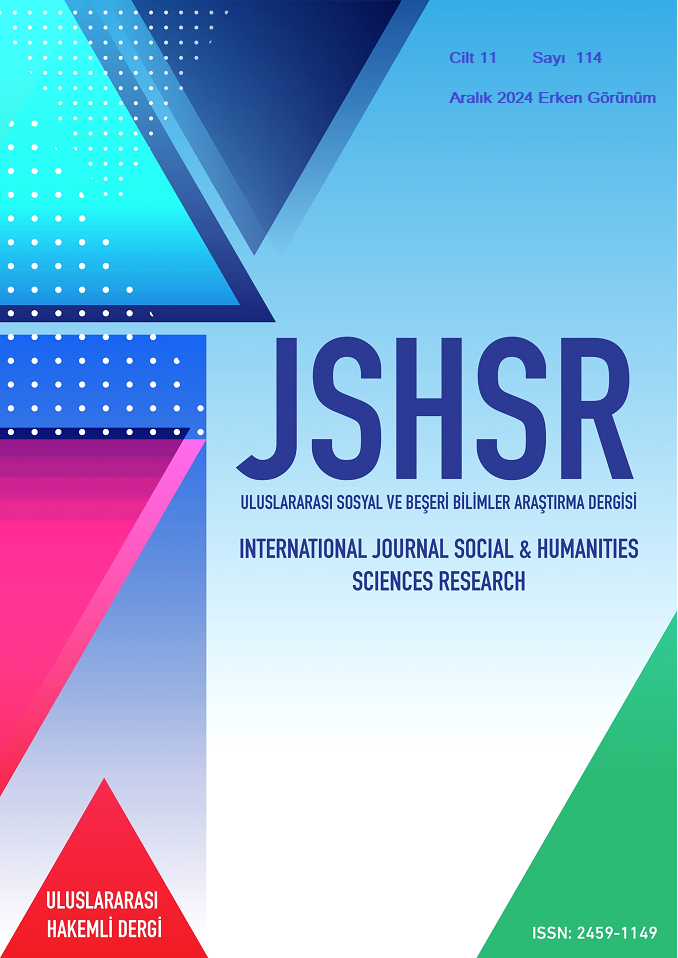Generative AI and Architectural Object Generation
DOI:
https://doi.org/10.5281/zenodo.14556665Keywords:
Architectural Object, Genera-Topia, Generative Artificial Intelligence, New RealismAbstract
The incorporation of generative artificial intelligence into the production practices of architectural objects represents a significant evolution in design. Challenging traditional design paradigms necessitates reassessment of the roles of technology and human agency in design processes. Examining this dynamic interaction through various philosophical and theoretical frameworks allows us to understand the potential impact of generative AI as an actor in architectural design on the production of objects in the field of architecture. These changes in architectural design and representation processes require a redefinition of the traditional categories of objects and subjects in architecture as art forms. Here, an object can be a representation of the design or a physical architectural structure. This study adopts the perspective of the new realist movement to redefine an object. New realism is based on an understanding of an object (non-human) as an agent rather than a passive construct. This study aims to redefine the traditional object and its position in the production process. For this definition, Bruno Latour's actor-agent and quasi-object in Actor-Network Theory (ANT), Michel Serres' quasi-object theory, Timothy Morton's concept of hyper-objects, which are gathered under the umbrella of new realism, are utilized and explained with the concept of genera-topia produced through these concepts. Going beyond humanist discourses, these concepts make it possible to reveal the hybrid and heterotopic structure and agency of spaces/relationships created by the contact between subject and object in the process of digital transformation, especially in the context of generative artificial intelligence.
References
Adaş, E. ve Erbay, B. (2022). Yapay Zekâ Sosyolojisi Üzerine Bir Değerlendirme. Gaziantep Üniversitesi Sosyal Bilimler Dergisi, 21(1), 326-337. https://doi.org/10.21547/jss.991383
Adiyanto, J. (2021). Archi-text-ture: Architecting Through Writing. Architectural Research Journal, 1(1), 01-08.
Akın, Ö. (1986). Psychology of Architectural Design. Pion Lted.
Al, B. (2019). Generatif Sanat Kavramı ve Görsel Sanatlarda Sayısal Yaratıcılık. Tasarım Enformatiği, 1(2), 78-91.
Ardatürk, A.Ş. (2022). Tasarımcı Zihninin Bir Yansıması Olarak; “Yapay Zeka”. Online Journal of Art and Design, 10(4), 283-300.
Avcı Aksoy, Ö. (2022). Sosyal Bilimlerde Yeni Açılımlar: Yeni Materyalizm ve Minör Bilim. Mülkiye Dergisi, 46(1), 137-162.
Barker, T. (2023). Michel Serres and the Philosophy of Technology. Theory, Culture & Society. https://doi.org/10.1177/02632764221140825
Bhardwaj, P. & Sra, M. (2023). Ghost in the Machine: Discourses with AI. In J. Kim & V. Szabo (Eds.), SIGGRAPH Asia Art Papers, 6(1), 1-6. https://doi.org/10.1145/3610591.3616429
Bree, T. V. (2016). Evolving Digital Hyperthymesia. In The Art of Ethics in the Information Society Mind You (28-33). Amsterdam University Press. https://doi.org/10.5117/9789462984493
Cevizci, A. (1999). Felsefe Sözlüğü, Paradigma Yayıncılık.
Çokokumuş, B. (2012). Dijital Ortamda Kültür ve Sanat. International Journal of New Trends in Arts, Sports & Science Education, 1 (3): 51-66.
Floridi, L. (2014). The Fourth Revolution: How the Infosphere is Reshaping Human Reality. Oxford University Press.
Foucault, M. (2000). Özne ve İktidar., Ayrıntı Yayınları, 291-302.
Franck, O. A. (2002). Düşünce İçin Mimarlık: Sanalın Gerçekliği. Mimarlık ve Sanallık içinde (s. 27-30). Boyut Yayın Grubu.
Galanter, P. (2003). What is generative art? Complexity theory as a context for art theory. In GA2003–6th Generative Art Conference.
Gamble, C. N., Hanan, J. S., Nail, T. (2019). What is New Materialism? Angelaki Journal of Theoretical Humanities, 24(6):111-134. https://doi.org/10.21547/jss.991383
Göker, G. (2017). Dijital Heterotopyalar: “Başka” Bir Bağlamda Yeni Medya. Selçuk İletişim, 9(4), 164-188.
Halsall, F. (2016). Actor-Network Aesthetics: The Conceptual Rhymes of Bruno Latour and Contemporary Art. New Literary History, 47(2): 439-461.
Harman, G. (2007). The Importance of Bruno Latour for Philosophy. Cultural Studies Review, 13(1): 33.
Harman, G. (2020). Nesne Yönelimli Ontoloji, Her Şeyin Yeni Bir Teorisi. Tellekt Yayınları.
Harman, G. (2022), Sanat ve Nesneler. Ayrıntı Yayınları.
Hançerlioğlu, O. (2002). Felsefe Sözlüğü. Remzi Yayınevi.
Hidayat, A., & Rahman, A. (2020). Ngekos.Tan Kinira.
Huyssen, Andreas (1995). Twilight Memories: Marking Time in a Culture of Amnesia. Routledge.
Kabakoğlu, A.D.& Birol, G. & Akgün, B, (2019). Kahvehane: Bir Heterotopik Mekan, 5.Uluslararası Mühendislik Mimarlık ve Tasarım Kongresi, İstanbul.
Latour, B. (2020). Biz hiç modern olmadık. Norgunk Yayıncılık.
Levent, M. (2018). Sanat Eyleminde Özne/Bellek-Nesne/Mekan İlişkisi, Hacettepe Üniversitesi Güzel Sanatlar Enstitüsü, Yüksek Lisans Sanat Çalışması Raporu, Ankara.
Liu, Z. (2021). Sociological perspectives on artificial intelligence: A typological reading. Sociology Compass, 15(1).
Ozar, B., & Koca, D. (2024). Bir Diyalog Ortamı Olarak Üretken Yapay Zeka: Tasarımda Anlamsal Arayış Sürecinin Temsili. Art-E Sanat Dergisi, 17(33), 111-138. https://doi.org/10.21602/sduarte.1462578
Öktem, Ü. (2000). Descartes, Kant, Bergson ve Husserl'de Sezgi. Ankara Üniversitesi Dil ve Tarih-Coğrafya Fakültesi Dergisi, 40(1-2), 159-188.
Serres, M. (2024). İnsanlanma. Livera Yayınevi.
Serres, M. (2024). Parazit. Ketebe Yayınevi.
Teyssot, G., & Korbi, M. (2024). Heterotopias and the History of Spaces. Burning Farm: A Journal on Domestic Space and Architecture, (19), 23-36.
Tunalı, İ. (2009). Felsefeye Giriş.Altın Kitaplar Yayınevi.
Turan, B. O. Relationship between Process, form and Representation in the Design Environment of 21st Century. Megaron. 2011; 6(3): 162-170.
Türk Dil Kurumu Sözlükleri. (2024). Nesne. https://sozluk.gov.tr/
Üner G. & Erdoğan, E. (2020). Mimarlığın Diğer Sanat Dalları ile İlişkisi, Online Journal Of Art and Design, vol.8, no.2, pp.167-179.
Verbeek, P. P. (2006). Materializing morality: Design ethics and technological mediation. Science, Technology, & Human Values, 31(3), 361-380.
Wahba, S.M.E.D. (2010). Friendly and Beautiful: Environmental Aesthetics in Twenty-First-Century Architecture. Nexus Netw J, 12, 459–469. https://doi.org/10.1007/s00004-010-0045-1
Yılmaz, E. (2015). Nesne Üzerinden Mekâna Bakmak, Ege Mimarlık Dergisi, 25- 9, 45.
Yurdigül, Y., & Yıldırım, A. (2021). Gerçeklik Algısına Bir Müdahale Aracı Olarak Sentetik Medya Teknolojileri. İletişim ve Diplomasi,5, 105-121.
Downloads
Published
How to Cite
Issue
Section
License
Copyright (c) 2024 INTERNATIONAL JOURNAL OF SOCIAL HUMANITIES SCIENCES RESEARCH

This work is licensed under a Creative Commons Attribution 4.0 International License.


